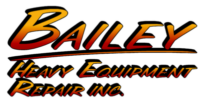What Should You Do When Your Heavy Equipment Fails?
While heavy equipment is often thought of as being incredibly reliable, there are times when issues can occur. Sometimes it can fail unexpectedly and cause a major inconvenience by putting a stop to your operations. How do you deal with heavy equipment failure? We’ll discuss what to do if your heavy equipment fails so that you can get it up and running again as quickly as possible.
1. Determine If There’s Really a Problem
Before you do anything, it’s crucial to determine whether there really is a problem with your heavy equipment. Check for things like loose wires or plugs. Sometimes, something as simple as a loose connection can cause your equipment to fail. If you can’t find anything visually wrong, try starting the equipment again. If it still doesn’t work, then you’ll need to take further steps.
2. Investigate the Cause of the Problem
Once you’ve determined that there is a problem, it’s time to start investigating the root cause. This will help you determine what needs to be done to fix the problem. Often, investigating the cause can be as simple as consulting the owner’s manual. Other times, you may need to call in a professional to take a look. Since some issues may need disassembly of the equipment, it’s often best to call in a professional if you’re not sure what you’re doing.
3. Take Action To Fix the Problem
After determining the problem, it’s time to take action to fix it. This will usually involve making repairs or replacements. If a seriously damaged part was the cause of the failure, you might need to replace it entirely. If a repair can be made, that’s often the best course of action. Sometimes, all it takes is a simple fix to get your equipment up and running again. A professional is best suited for repairs or replacements because they have the knowledge and experience to do the job right.
4. Test Your Equipment To Ensure the Problem Is Fixed
After fixing the problem, you’ll need to test your equipment to ensure the repair was successful. If everything is working properly, then you can get back to using it. If the problem persists, you’ll need to figure out what else could be causing it. It’s possible that there may be more than one issue at play. During the investigation stage, it’s vital to identify all potential root causes to ensure that they’re all addressed.
5. Prevent Future Problems
Preventing future problems is always the goal. After your equipment has been repaired, take the necessary steps to prevent the issue from happening again. This may involve regularly inspecting the equipment, keeping it clean, and following the manufacturer’s maintenance schedule. By taking these preventive measures, you can help reduce the likelihood of future failures.
Heavy equipment failures can cause major problems for your business. But by taking the right steps, you can fix the problem and prevent it from happening again. By investigating the root cause, taking action to fix it, and testing your equipment, you can get your heavy equipment up and running again. And by taking preventive measures, you can help reduce the likelihood of future failures.
